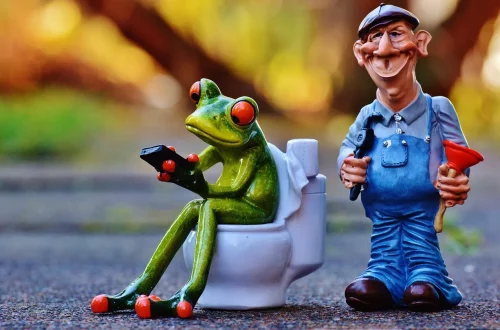
The Evolution of xxx Memes: From Humorous Beginnings to Cultural Phenomenon
The digital landscape has evolved dramatically over the past few years, fundamentally transforming the way we communicate, share ideas, and engage with each other. At the heart of this transformation lies the phenomenon of memes, which have emerged as a unique form of expression that transcends traditional boundaries of humor and creativity. Initially born from simple images and captions, memes have grown into a cultural force that reflects societal norms, challenges political ideologies, and often serves as a coping mechanism in an increasingly complex world.
Memes are no longer confined to the realm of humor; they now encapsulate social commentary, political discourse, and even philosophical musings. Their rapid dissemination across social media platforms has allowed for a democratization of content creation, enabling anyone with internet access to participate in this cultural dialogue. As memes continue to evolve, they mirror the changing dynamics of society, illustrating how humor can be a vehicle for deeper conversations and connections.
In this exploration of meme culture, we will delve into the various stages of meme evolution, examining how these digital artifacts have transformed from light-hearted jokes into powerful tools for expression and engagement. Through this lens, we can better understand the significance of memes in contemporary society and their potential to influence public opinion and foster community among diverse groups of people.
The Humble Origins of Memes
The concept of memes dates back to the 1970s, introduced by British evolutionary biologist Richard Dawkins in his book “The Selfish Gene.” He used the term to describe how cultural ideas spread and evolve, akin to genetic evolution. However, the modern interpretation of memes as we know them today began to take shape with the advent of the internet and social media. Early memes were simple images paired with text, often featuring relatable scenarios or catchphrases that resonated with a specific audience.
Platforms like 4chan and Reddit played a pivotal role in the early development of meme culture, allowing users to create, share, and remix content at an unprecedented scale. The infamous “Bad Luck Brian” and “Success Kid” memes exemplify this early phase, characterized by their easily recognizable formats and humorous undertones. These memes served as a means of connecting individuals through shared experiences, allowing people to find humor in their everyday struggles.
As the internet became more accessible, the diversity of memes expanded significantly. Different communities began to create their own unique styles and formats, reflecting their distinct cultures and interests. For instance, gaming communities developed memes around popular titles, while political discourse found a new voice in satirical images and commentary. This diversification not only enriched meme culture but also laid the groundwork for its evolution into a more complex medium of expression.
The early memes were often fleeting, with their relevance tied to specific trends or events. However, their fundamental appeal—relatability and humor—ensured that they would continue to thrive. As users began to experiment with different formats and themes, memes started to take on new roles, evolving from mere entertainment into powerful instruments capable of shaping narratives and influencing public discourse.
The Rise of the Viral Meme
With the proliferation of social media platforms like Facebook, Twitter, and Instagram, memes began to achieve viral status, spreading rapidly across vast networks. This shift marked a turning point in meme culture, as the focus shifted from niche communities to a more mainstream audience. Viral memes became a cultural currency, with the potential to reach millions in a matter of hours.
The mechanics of virality are fascinating; memes often thrive on relatability, simplicity, and humor. The ability to convey a complex idea or emotion in a single image or short video is what makes memes so appealing. They serve as a universal language, transcending geographical and linguistic barriers. During significant events or crises, memes can provide a sense of community and shared experience, helping individuals to cope with the challenges they face.
One of the most notable aspects of viral memes is their adaptability. As they spread, users remix and reinterpret them, adding their own twist or context. This collaborative nature fosters creativity and allows memes to evolve continuously. For example, the “Distracted Boyfriend” meme has been used to illustrate a myriad of situations, from relationship dynamics to global issues, demonstrating how a single image can take on multiple meanings depending on the context.
Moreover, the rise of influencers and content creators has further accelerated the dissemination of memes. Individuals with large followings can amplify viral content, ensuring that it reaches an even wider audience. This symbiotic relationship between memes and social media has transformed the way we consume information, as memes often encapsulate complex ideas in a digestible format, making them more shareable and engaging.
However, the viral nature of memes also raises questions about ownership and authenticity. As memes circulate, original creators may not always receive credit, leading to debates about intellectual property in the digital age. Despite these challenges, the impact of viral memes on culture and society is undeniable, highlighting their power to engage, entertain, and inform.
Memes as Tools for Social Commentary
As memes have evolved, they have increasingly taken on the role of social commentary, providing a platform for individuals to express their views on pressing issues. In a world inundated with information, memes offer a way to distill complex topics into easily digestible content. This ability to convey powerful messages through humor has made memes a popular tool for activism and social change.
Political memes, in particular, have gained prominence as a means of critique and satire. During election cycles, memes can shape public perception, influence voter behavior, and even challenge the narratives presented by traditional media outlets. The ability to create and share political memes has democratized political discourse, allowing individuals to engage with issues in a more accessible and relatable manner.
For example, memes that highlight social injustices or political absurdities can resonate with large audiences, sparking conversations that might not occur through conventional means. The humor embedded in these memes often makes difficult topics more approachable, fostering dialogue and encouraging individuals to reflect on their beliefs.
Additionally, meme culture has seen the rise of “meme activism,” where creators use their platforms to raise awareness about social causes. From climate change to mental health awareness, memes can mobilize communities and inspire action. The ability to convey urgency and importance through humor can galvanize support and drive change, proving that memes are not just entertainment but also a catalyst for social movements.
However, the use of memes for social commentary is not without its challenges. The fine line between humor and insensitivity can lead to misunderstandings and backlash. As memes often rely on stereotypes or exaggeration, they can inadvertently perpetuate harmful narratives. Therefore, creators must navigate the complexities of representation and ensure that their content fosters positive dialogue rather than division.
The Future of Memes in a Digital World
As we look to the future, the evolution of memes shows no signs of slowing. The rapid pace of technological advancements continues to shape how we create and consume content. From the rise of augmented reality filters to the integration of artificial intelligence in content generation, the possibilities for meme creation are expanding.
One notable trend is the increasing use of video content in meme culture. Platforms like TikTok have popularized short-form videos, allowing users to combine visuals, audio, and text in creative ways. This shift has given rise to a new generation of memes that harness the power of multimedia, making them even more engaging and shareable.
Moreover, the role of brands in meme culture is becoming more pronounced. Companies are leveraging memes to connect with younger audiences, using humor and relatability to humanize their marketing efforts. This trend raises questions about authenticity and the commercialization of meme culture, as brands must navigate the delicate balance between participating in the conversation and appearing disingenuous.
As memes continue to evolve, their potential to influence culture and society will only grow. They have already transformed the landscape of communication, serving as a bridge between humor and serious discourse. The challenge will be to maintain the authenticity and creativity that make memes such a powerful form of expression.
In conclusion, the evolution of memes from simple humor to cultural phenomenon highlights their significance in contemporary society. They have become more than just entertainment; they are tools for connection, expression, and change. As we move forward in an increasingly digital world, memes will undoubtedly continue to shape and reflect the narratives that define our lives.
—
**Disclaimer:** This article is not intended as medical advice. If you have health concerns, please consult a qualified healthcare professional for guidance.




